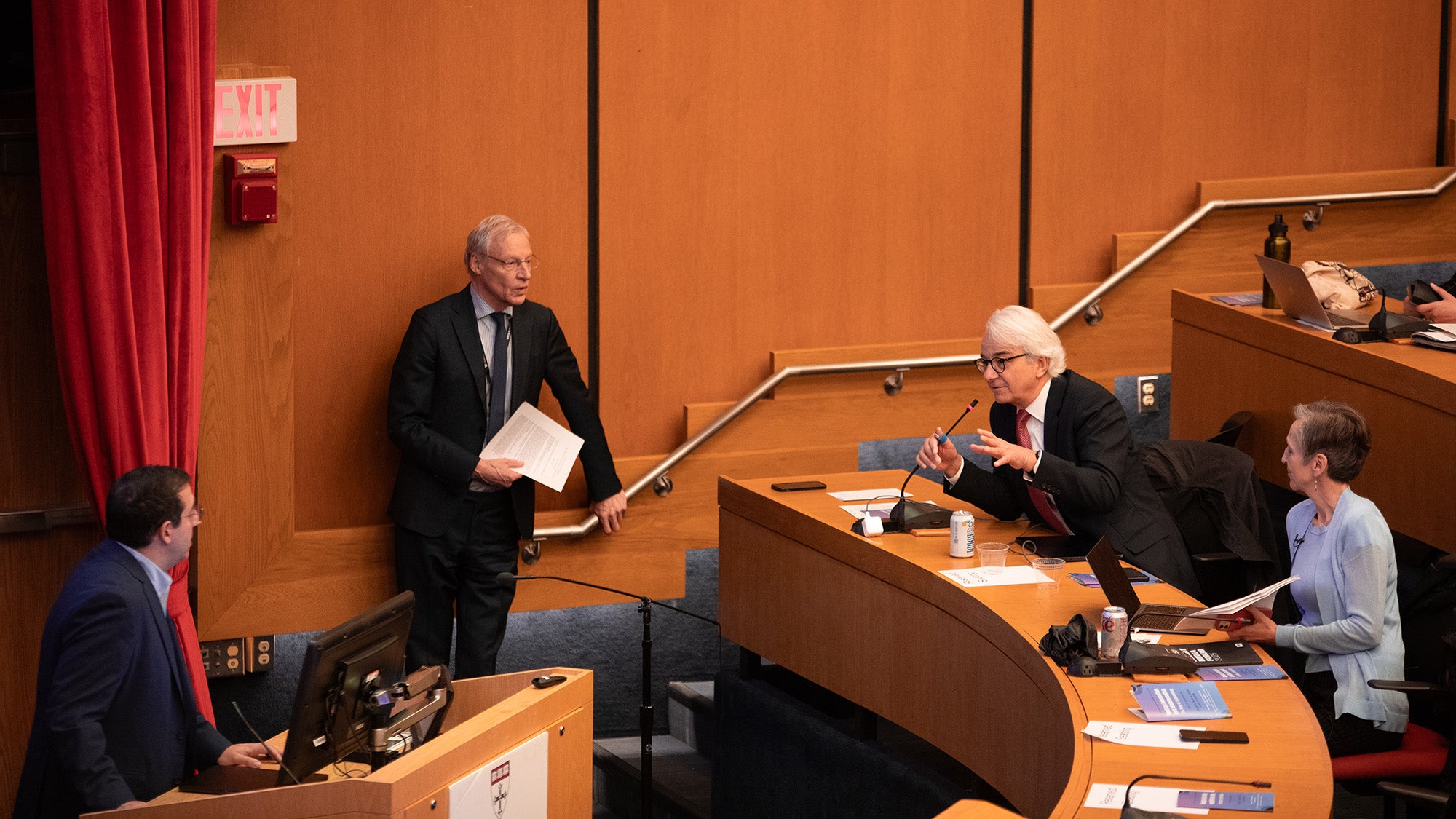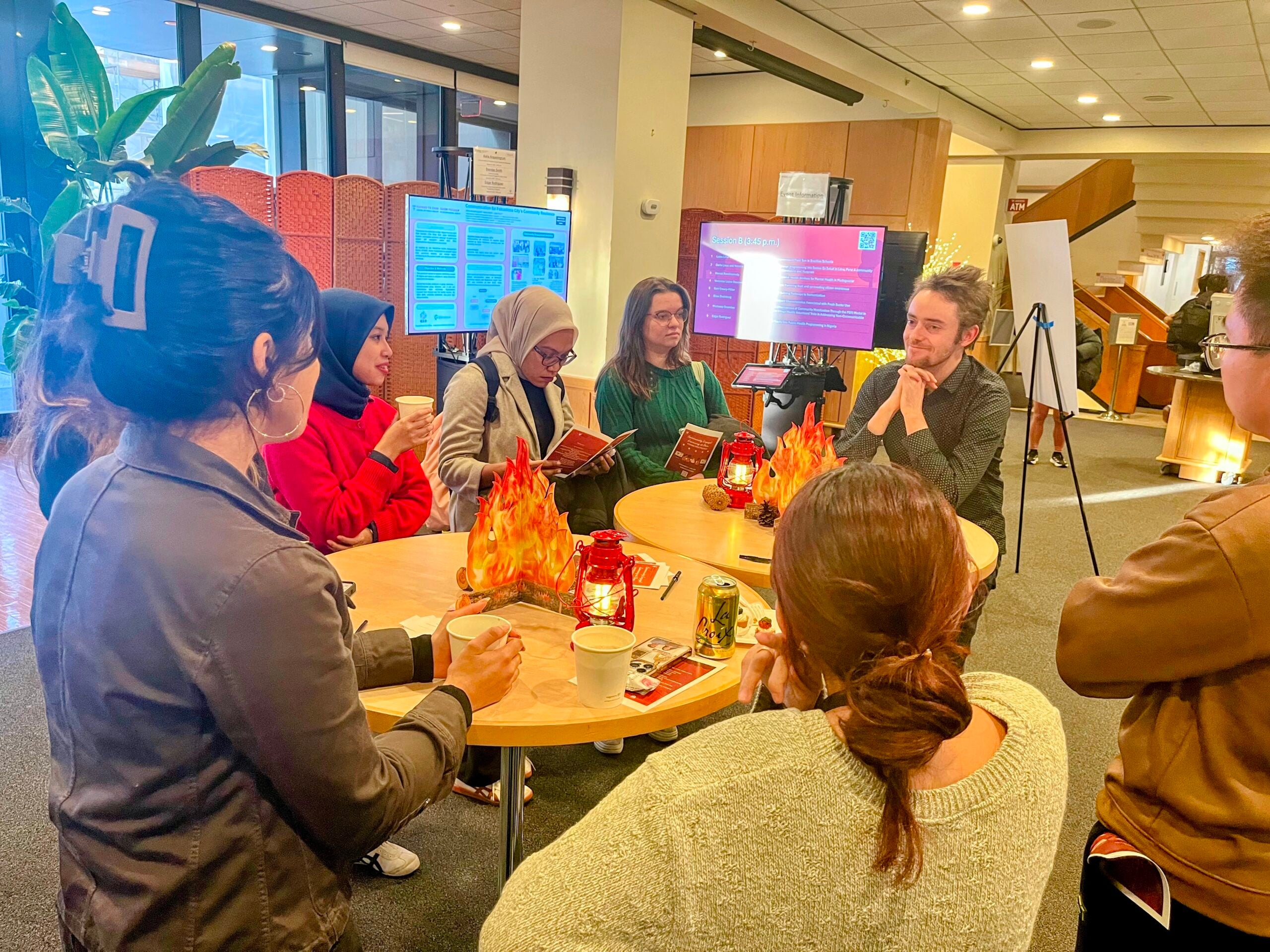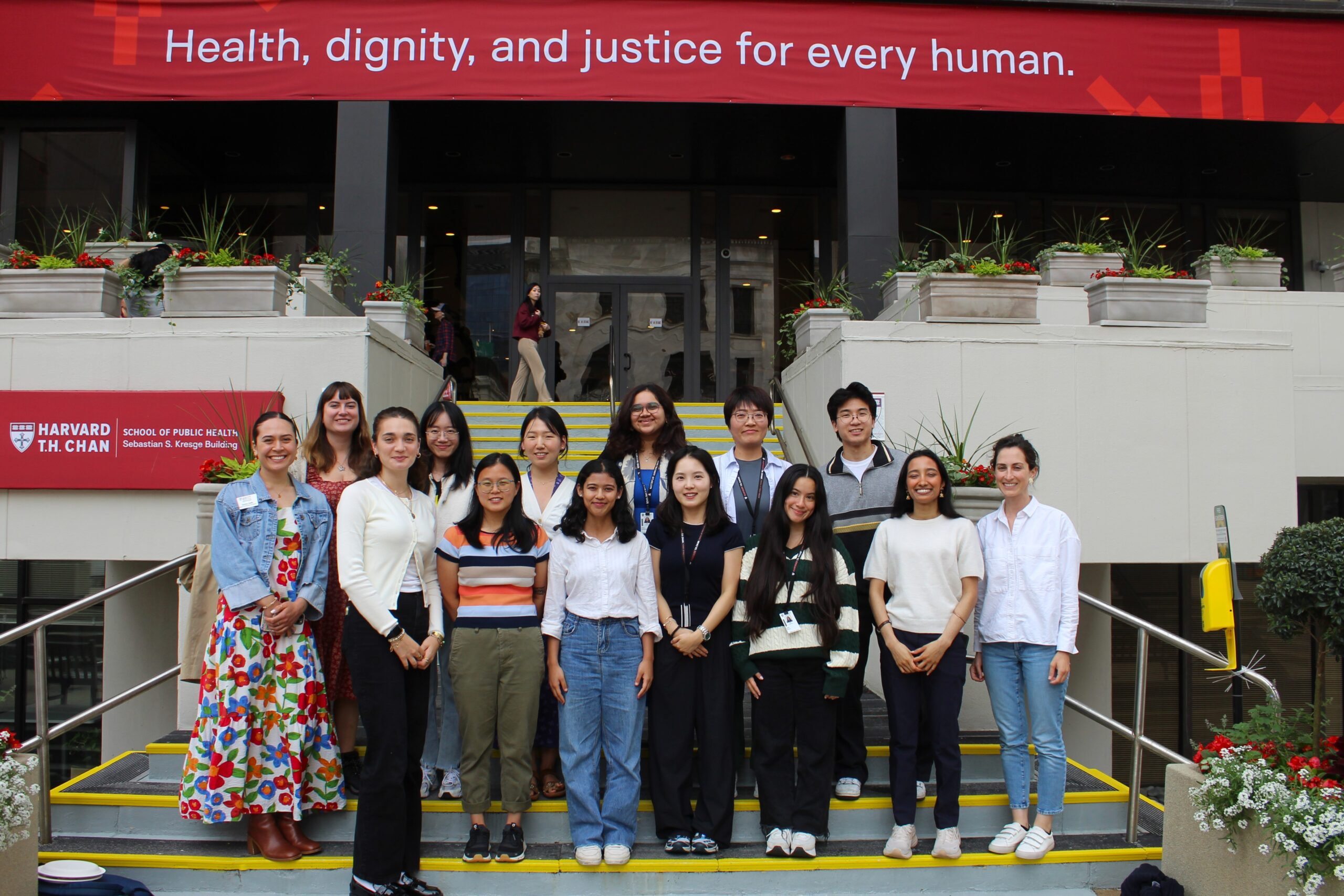Public health experts air concerns about censorship, misinformation at symposium

Observing the fallout in the public health arena from federal government actions taken over the past few months—key health programs dismantled, health agencies gutted, hundreds of research grants cancelled, and universities penalized—led Alfredo Morabia to sound the alarm.
Morabia—editor-in-chief of the American Journal of Public Health (AJPH), professor of epidemiology at the Barry Commoner Center, Queens College, CUNY, and professor of clinical epidemiology at the Columbia Mailman School of Public Health—voiced his concerns at the 9th Cutter Symposium at Harvard T.H. Chan School of Public Health, held May 8 in Kresge Auditorium.
“We are in a completely different situation” from where we’ve been before, he said.
The symposium focused on the role of epidemiology in medical information and misinformation. It also featured Issa Dahabreh, associate professor of epidemiology at Harvard Chan School and methods editor of the Journal of the American Medical Association (JAMA), and Stefanie Friedhoff, associate professor of the practice of health services, policy and practice, and interim director of the Information Futures Lab at Brown University.
Albert Hofman, Stephen B. Kay Family Professor of Public Health and Clinical Epidemiology and chair of the Department of Epidemiology, moderated the event. The Cutter Lectures, covering topics in preventive medicine, have been held since 1912 thanks to a bequest from John Clarence Cutter, a doctor and graduate of Harvard Medical School.
Fighting censorship
Morabia said that, since January, he has witnessed how epidemiology and public health can be “forced to misinform.” In his role as editor at AJPH, he has received letters from authors of already-accepted manuscripts asking to either remove their names; remove certain words from titles, abstracts, or texts; or, in some cases, to have entire articles removed, because the manuscripts dealt with topics that are currently out of favor with the Trump administration.
“It was rapidly clear to me that there was no way I could answer positively to any of those requests,” Morabia said. “It was a slippery slope.” He realized that if he erased a word in one place in a paper, he might miss it in another. Alarmed at what was going on, he wrote an AJPH editorial explaining why he couldn’t change an article that had already been accepted for publication. “This [would have been] equivalent to censorship,” he said.
Morabia gave an overview of how epidemiology has sought over the past century to provide critical public health insights in spite of periodic attempts to limit or censor scientific research. For example, during the Cold War, amid intense work to develop and test atom bombs, the U.S. government attempted to downplay the health risks of radiation in spite of epidemiologic studies connecting exposure with cancer and early death. During the AIDS epidemic, even though epidemiologists had shown that the disease was not limited to gay or bisexual men or IV drug users, the U.S. government—propelled by conservatives loath to discuss anything to do with sexuality or drug use—delayed public acknowledgement of the crisis and restricted funding for AIDS research and prevention.
But current government actions are unprecedented in the U.S., Morabia said. He cited a number of examples, including the excision of certain words and topics on government websites, the rescinding of grants and contracts ostensibly related to so-called “woke” topics, the dismantling of health monitoring systems and data collection systems, and the slashing of scores of health programs. “This is a real threat, not something you can take lightly,” he said. “And where’s the limit?”
Unpacking misinformation
Friedhoff discussed the impact of the vast amounts of misinformation online about topics ranging from autism to measles to vaccines. She noted that it’s actually not so easy to determine the harms of such information. “The evidence base really isn’t clear,” she said, noting that experts don’t even agree on a definition of misinformation.
To illustrate the confusion, she cited a recent Kaiser poll on health information and trust showing that, over the past year, the share of people who’ve been exposed to false claims that the measles vaccine is more dangerous than getting measles itself jumped from 18% to 33%. But simply being exposed to false claims “doesn’t tell us anything,” she said, “just that more people have seen the claims.” In fact, in the same poll, 8 in 10 adults and parents said they are confident that the measles-mumps-rubella (MMR) vaccines are safe.
What is changing, however, is how people are thinking about vaccine mandates, Friedhoff said. A Kaiser poll from December 2022 found that, compared to 2019, more adults were saying that parents should be able to decide not to vaccinate their children with the MMR shot. Friedhoff said this change is being driven by factors such as leaders communicating concerns about the vaccine and people’s “in-groups” speaking out against it. “There are many different ways in which people respond to this type of information,” Friedhoff said. “We bring our histories, we bring what we’ve learned, and then we engage with information. But it is not clear cut that misinformation harms everybody the same way.”
Given how difficult it is to distinguish fact from fiction online, and people’s lack of trust in institutions, Friedhoff said that scientists should share health information by collaborating with trusted messengers in communities, such as churches and food banks, to engage with people where they spend their time, use languages that people speak, deliver messages for people with varying levels of literacy, and share stories that resonate. “Solutions have to start at the local level,” she said. “We need to build relationships, collaborations, and a movement for public health.”
Dahabreh spoke about the importance of establishing a clear framework for the use of language regarding causality in observational studies published in medical journals. Imprecise use of causal language can lead to what he dubbed “methodological misinformation.” For instance, the use of certain words in papers, such as “induce” or “modify,” might suggest causality even if that is not the case. In a special communication in JAMA in May 2024, Dahabreh and JAMA editor-in-chief Kirsten Bibbins-Domingo offered a structured approach for using causal language in observational studies, with the goal being of fostering better communication between authors, reviewers, editors, and readers.



